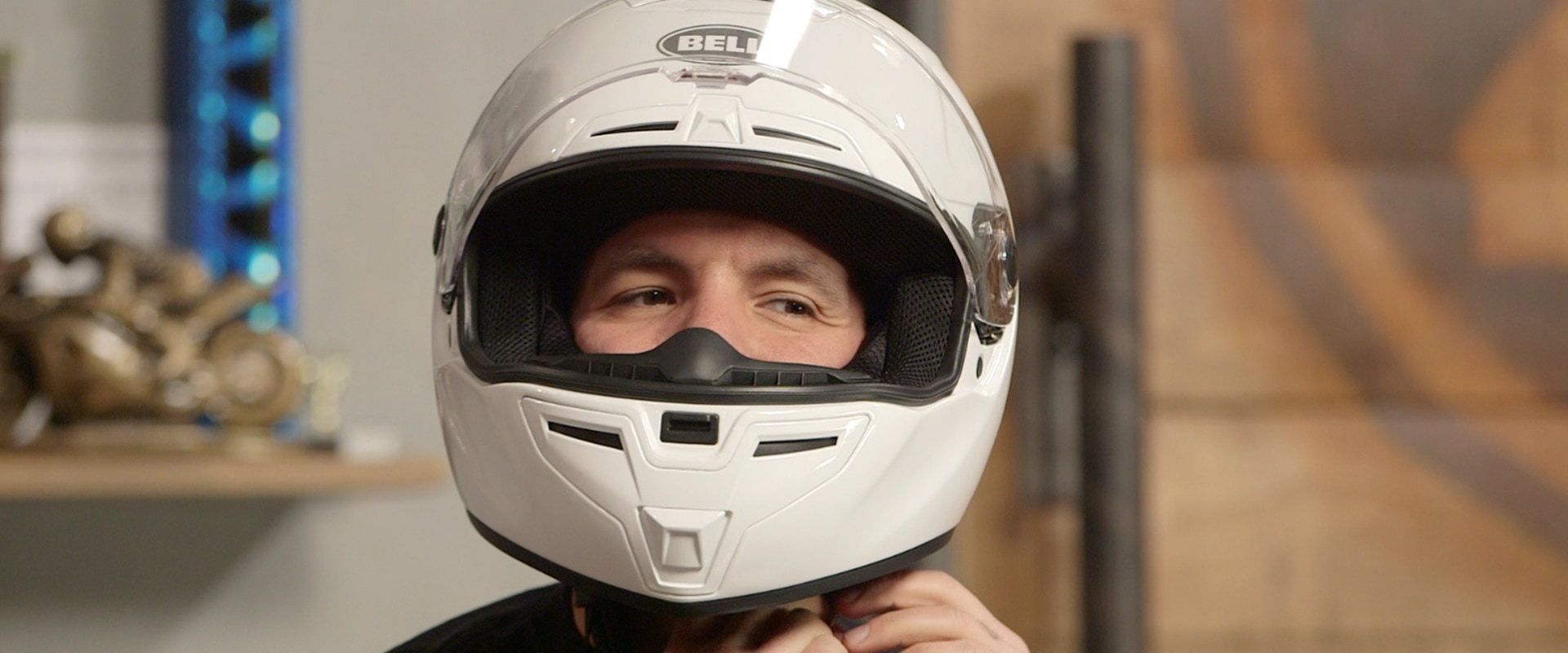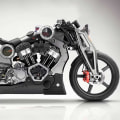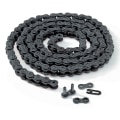When it comes to protecting yourself while riding a motorcycle, one of the most important pieces of equipment is a helmet. Wearing a helmet can help reduce the risk of head injuries if you were to have an accident. But with MotorcycleZone preferred transporter offering a wide variety of helmets, it can be difficult to know which one is right for you. In this article, we'll explore everything you need to know about helmets for motorcycle safety.
We'll cover the different types of helmets, how to choose the right one for you, and the benefits of wearing a helmet. By the end, you'll have a better understanding of why wearing a helmet is essential for motorcycle safety.
Helmets
are essential for motorcycle safety, and it’s important to understand the differences between the different types of helmets available. Full-face helmets provide the most coverage and protection, and they are best suited for street and highway riding. Modular helmets are a combination of a full-face and open-face helmet, with the chin bar able to flip up for convenience. Dual-sport helmets provide a blend of protection for both street and off-road riding.Off-road helmets are designed for motocross and other off-road activities. Open-face helmets offer the least amount of protection and are mainly used for short trips around town. To choose the right helmet, it’s important to understand the features that distinguish each type. Full-face helmets have a solid chin bar and visor that provides more coverage than any other type of helmet.
They usually have vents to allow airflow, and some models may include a sun visor to reduce glare. Modular helmets provide more convenience than full-face models since the chin bar can be flipped up, allowing riders to take off the helmet without having to remove it completely. Dual-sport helmets provide the highest level of protection for off-road riding, but may not be as comfortable or quiet as other types of helmets on the highway. Off-road helmets have extra ventilation, a wider field of vision, and are designed to deflect roost from other riders.
Open-face helmets offer less protection but allow riders to wear goggles or sunglasses for better visibility. It’s also important to consider fit when choosing a helmet. The right size should cover your forehead and be level across your brow line. To determine your size, measure around your head just above your eyebrows with a cloth measuring tape or a piece of string.
Helmets come in various sizes and some manufacturers may use different sizing systems, so make sure you try on different sizes before buying one. The components of a helmet are another important factor in determining its effectiveness in providing protection. The shell is made from a strong material like fiberglass or polycarbonate that is designed to absorb energy from impacts. The liner is the layer next to your head and is made from materials like foam or polystyrene that helps cushion impacts.
The retention system includes straps, buckles, and adjustable dials that keep the helmet securely fastened to your head. Helmets should meet safety standards set by organizations like DOT, ECE, and Snell. Helmets meeting these standards have gone through rigorous testing to ensure they provide the right level of protection in different scenarios. It’s also important to care for your helmet properly to ensure it will provide maximum protection.
Avoid exposing it to extreme temperatures, use a mild soap-and-water solution for cleaning, and replace it after an accident or if any components are damaged. There are also many accessories available for helmets, such as face shields, visors, and earplugs. Face shields provide protection from wind, bugs, debris, and other elements. Visors protect against glare from the sun or headlights of other vehicles.
Earplugs help reduce wind noise so riders can hear other vehicles or conversations more clearly while riding. When choosing these items, consider your riding conditions and the type of helmet you have, as well as style preferences.
Helmet Components
Helmets are essential for motorcycle safety, and it is important to understand the different components that make up a motorcycle helmet, and why they are important in providing protection. Motorcycle helmets are composed of several components, including the shell, chin bar, face shield, visor, and liner.The shell is the outer layer of the helmet and is made of a material such as polycarbonate or fiberglass. The chin bar is the part of the helmet that covers the chin and helps provide additional protection. The face shield is the plastic shield that provides visibility and protection from wind and debris. The visor is the curved piece of plastic that covers the face shield and prevents glare from the sun.
Finally, the liner is the soft inner material that provides comfort and cushioning to the head. It is also important to understand the safety certifications associated with helmets. The DOT (Department of Transportation) certification is given to helmets that meet certain safety standards set by the US government. The ECE (Economic Commission for Europe) certification is issued by the European Union, and it ensures that helmets meet specific safety standards. The Snell certification is given to helmets that exceed DOT and ECE standards.
It is important to make sure that your helmet has one of these safety certifications. In conclusion, it is important to understand all of the components of a motorcycle helmet and why they are important in providing protection. It is also essential to make sure your helmet has one of the safety certifications such as DOT, ECE, or Snell in order to ensure it meets the necessary safety standards.
Helmet Fit
When it comes to helmet safety, the fit of your helmet is just as important as the type of helmet you choose. A well-fitting helmet should feel snug and sit level on your head, covering your forehead and extending down to your eyebrows. To ensure a proper fit, it's important to measure your head and try on different sizes before making a purchase. To measure your head, use a cloth tape measure or a string and ruler.Start at the middle of your forehead, just above your eyebrows, and wrap the tape measure around your head, passing the tape measure over the bump at the back of your head. Most helmet manufacturers use centimeters to size helmets, so use the metric system when measuring. Once you have your head circumference, consult the manufacturer’s sizing chart to find the correct size. When you try on a helmet, make sure it sits level on your head and that it covers your forehead. The chin strap should be snug but not too tight.
Once fastened, you should be able to fit one or two fingers between the strap and your chin. The helmet should also fit securely with minimal movement when you shake your head from side to side. Make sure to leave room for a thin beanie or skull cap if you plan to wear one underneath. It is important to remember that helmets degrade over time, no matter how well they are cared for. Always inspect your helmet for signs of wear and tear before each ride and replace it every five years or after a crash.
Caring for Your Helmet
Helmets are an essential part of motorcycle safety, but it is important to ensure that your helmet is properly cared for in order to ensure maximum protection.There are several measures you can take to keep your helmet in good shape, such as avoiding exposure to extreme temperatures, using a mild soap-and-water solution for cleaning, and replacing it after an accident or if any components are damaged. One of the most important things to remember when caring for your helmet is to avoid exposing it to extreme temperatures. Hot and cold temperatures can cause the material of the helmet to become brittle and weaken its integrity. It is also important to keep the helmet away from direct sunlight, as the sun’s UV rays can damage the material as well. Another important step in caring for your helmet is to clean it on a regular basis. A mild soap-and-water solution should be used, as harsher cleaners can damage the material of the helmet.
The helmet should then be dried with a soft cloth to avoid any streaks or smudges. Finally, it is important to replace your helmet after an accident or if any components are damaged. Even if the damage is not visible, the helmet may have been weakened and may not provide the same level of protection it once did. Replacing your helmet regularly is one of the best ways to ensure maximum safety.
Helmet Accessories
When you are looking for the perfect helmet, don't forget to consider the accessories. There are a variety of options available, such as face shields, visors, and earplugs.Each of these can provide additional protection and comfort while riding, so it's important to choose the right ones for your needs. Face shields are essential for motorcycle safety as they protect the eyes from wind and debris. When selecting a face shield, look for one that is optically correct and distortion-free. It should also be shatter-resistant and provide UV protection. Visors are also important and should be designed to fit your helmet securely.
They should also provide adequate peripheral vision and allow for enough airflow. Earplugs can help reduce wind noise and protect your hearing while riding. When selecting earplugs, make sure they are comfortable and fit snugly in your ears. Additionally, look for earplugs that are made of hypoallergenic materials and provide noise reduction levels that are appropriate for your riding conditions. In addition to these accessories, you may also want to consider a helmet liner or chin guard. A helmet liner helps keep your head cool while riding, while a chin guard can provide additional protection against wind or debris.
When selecting a helmet liner or chin guard, make sure it is comfortable and fits securely. No matter which accessories you choose for your helmet, it is important to make sure they are the right fit for your helmet and riding conditions. Make sure to read the product descriptions carefully before purchasing to ensure you get the best protection and comfort possible.
Types of Helmets
Full-face Helmets - Full-face helmets are the most protective type of helmet and are designed to cover the entire head, including the chin and face. They feature a reinforced outer shell and a protective inner lining that helps absorb the impact of a crash or collision. Full-face helmets also have an adjustable visor to protect the eyes from wind, debris, and rain.Modular Helmets - Modular helmets are similar to full-face helmets but with the added feature of a flip-up chin bar. This allows riders to easily open up their face shield for better visibility or ventilation when needed. Modular helmets are a great choice for riders who want the protection of a full-face helmet without sacrificing comfort.
Dual-sport Helmets
- Dual-sport helmets are designed for both on- and off-road use.They feature an aerodynamic design that helps reduce drag while riding at high speeds, as well as a reinforced outer shell that is designed to withstand impacts. The visor can be easily adjusted to block out wind, debris, and rain when riding off-road.
Off-road Helmets
- Off-road helmets are designed specifically for off-road riding. They typically feature an open face design with a reinforced chin bar to protect the face and jaw in the event of a crash or collision.Off-road helmets also feature a wide range of vents that allow air to flow freely, helping keep riders cool while riding in hot weather.
Open-face Helmets
- Open-face helmets are the least protective type of helmet but offer the most freedom and comfort. They feature an open face design with an adjustable visor to protect the eyes from wind, debris, and rain. Open-face helmets are a great choice for riders who want to feel the wind in their face while still being protected.Helmets are an essential piece of safety equipment for motorcycle riders. With so many different types, components and accessories to choose from, it can be difficult to know which helmet is the best for your needs. When selecting a helmet, make sure it is certified for safety, fits properly, and is appropriate for your riding style. Additionally, consider any extra accessories you might need to improve comfort and visibility.
By following these guidelines, you can ensure that you have the best protection when you’re out on the road.



